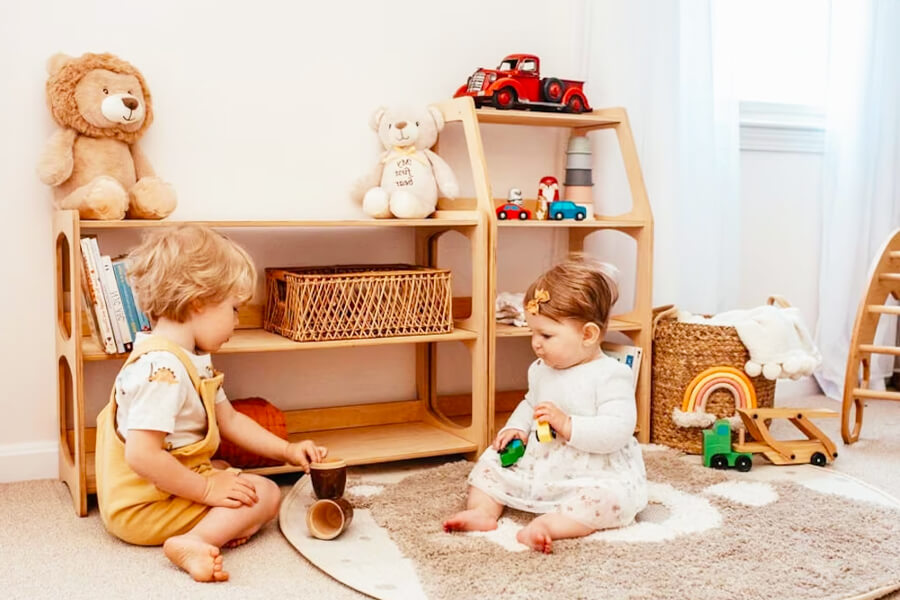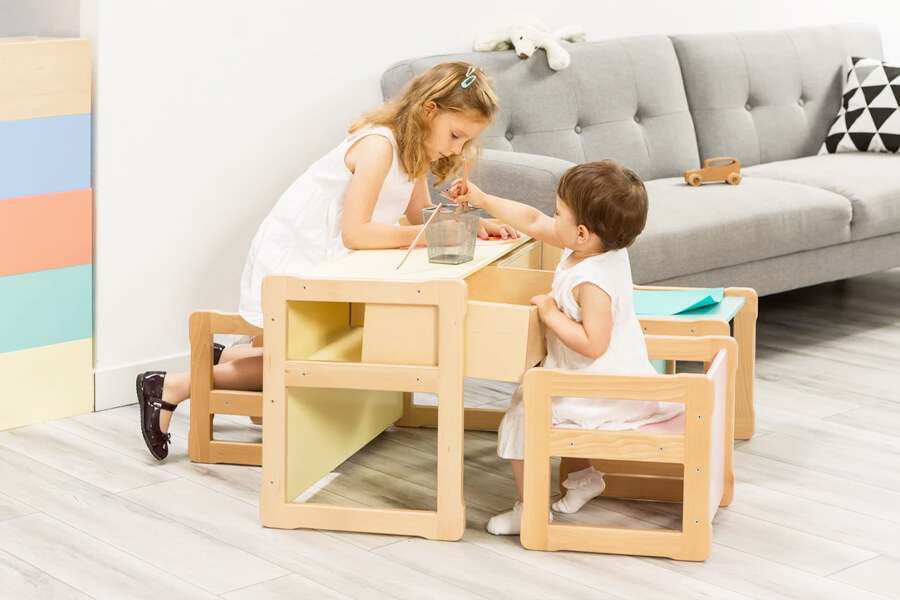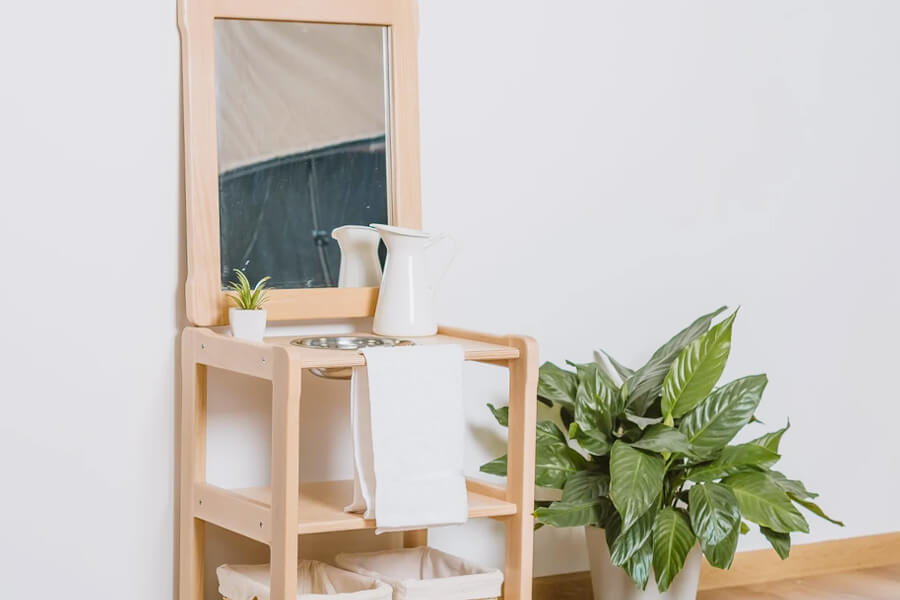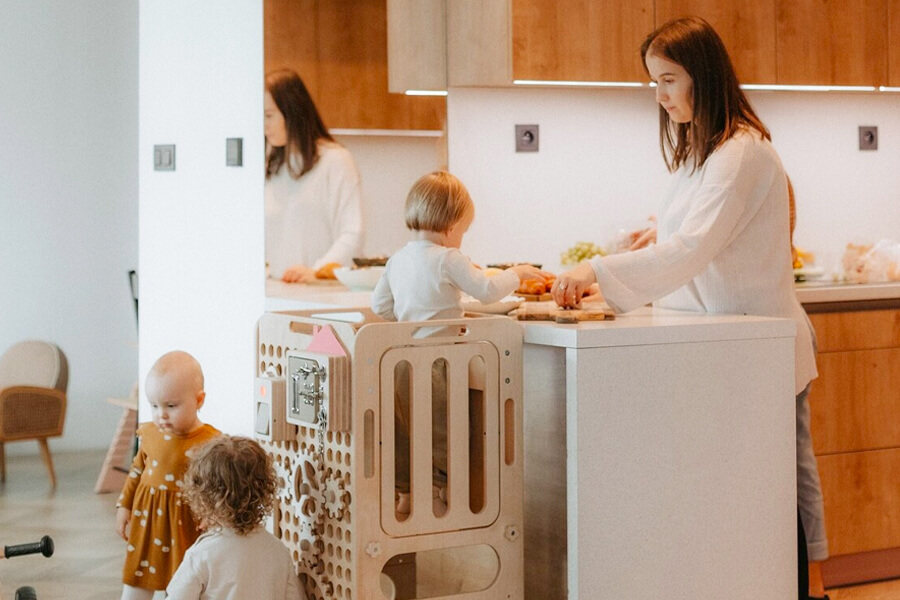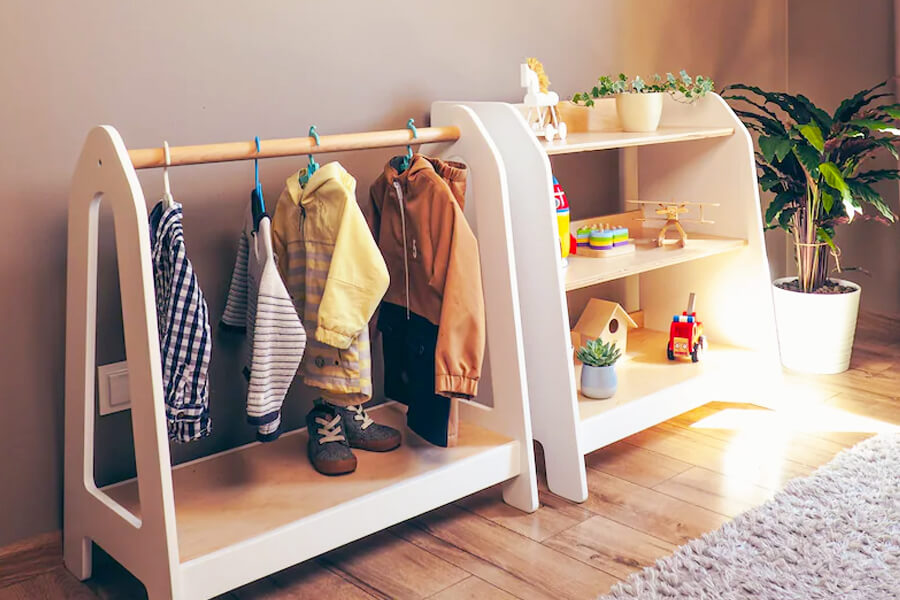Organizing your Montessori at home can be a great way to create a learning environment for your child that is both stimulating and enriching. By following the tips in this article, you can create a space that is both functional and visually appealing, while also providing your child with the opportunity to learn and grow. In a Montessori house, it is not about having all the best Montessori materials, but rather about having a prepared environment where your child can move freely and independently. It is about giving your child the opportunity to discover and learn through their own experiences and discoveries. If you are considering starting Montessori at home, here are some tips to help you get started.
How to Implement Montessori at Home
Organizing a Montessori at home can be simple with a few key points in mind. The first is to keep the environment as clutter-free as possible. This will help your child to focus on the task at hand and eliminate distractions. Second, all materials should be within reach and easily accessible. This allows your child to independence and autonomy. Lastly, everything should have a place and be put away after use. This helps to instill a sense of order and responsibility in your child.
The 5 Principles of Montessori at Home
The Montessori approach to education is one that is founded on five key principles. These principles can be applied at home to create a learning environment that is both stimulating and supportive.
The 5 Principles of Montessori are:
1. Follow the Child – The Montessori method is based on following the child’s natural development and allowing them to progress at their own pace. This means that the learning materials and activities are tailored to each individual child’s needs and interests.
2. Prepared Environment – The environment in a Montessori classroom (or home) is carefully prepared to provide everything the child needs for optimal learning and development. This includes well-designed, age-appropriate learning materials, as well as a calm and orderly setting.
3. Helping Hand – In a Montessori setting, adults provide gentle guidance and support when needed, but ultimately allow the child to discover and learn independently. This hands-off approach fosters independence, self-motivation, and confidence in children.
4. Positive Discipline – Rather than using punishment or rewards, Montessori educators use positive discipline techniques such as redirecting misbehavior into more constructive activities. This helps children learn self-control and appropriate social behaviors while still feeling respected and valued.
5. Freedom within Limits – Although there are certain rules and limits in a Montessori environment, children are also given freedom to explore and make choices within those limits. This balance of structure and freedom allows children to develop self-discipline as well as a sense of responsibility for their own actions.
How To Organize Your Montessori Home
With Montessori at home, creating a learning space can be done easily with many things you already have in your home.
- If your home enables, create a devoted learning environment just for them.
- Use basic, functional furnishings for the Prepared Environment in your home. The products can be timber, plastic, or other composites, but it is important that they are devoid of disturbances including images, anime personalities, or various other branding.
- Usage baskets and trays to arrange products on an easy-to-reach rack to help keep items organized. Children can concentrate more on the subjects they are studying when their dedicated comprehension room is minimalist.
Just because Montessori spaces are bare doesn’t mean that bare walls are appreciated. Displaying art that relates to your child’s current interests can help inspire their learning. Artwork doesn’t have to be expensive either, you can use magazine pages or buy prints from local musicians to create a warm and encouraging space for your child’s room.
Here are some tips for how to organize your Montessori at home:
- Create dedicated spaces for different activities. For example, you might have a reading corner with cushions and blankets for cozy story times, or a space where your child can explore art and crafts.
- Use low shelving or open storage containers so that everything is within easy reach for your child.
- Keep surfaces clear of clutter so that there is plenty of room for your child to play and explore.
- Choose developmentally appropriate toys and materials that will capture your child’s interest and imagination.
- Label everything clearly with pictures or words to help your child understand where things go.
- Encourage independence by teaching your child how to tidy up.
The Montessori Bathroom
Every space in your house is a chance for your kid to learn to look after the area as well as themselves. No place is this more true than in the washroom. Finding out to look after their hygiene is crucial to developing a solid, independent youngster. Like your kitchen, the washroom is a room in your home that can be adjusted for your Montessori kid as they expand. The bathroom is additionally the area where you can lead by instance by brushing your teeth and also cleaning your hands to demonstrate appropriate hygiene.
Utilize an age-appropriate step stool so your kid can conveniently reach the vanity on their own. There are likewise adapters for faucets and taps that allow your youngster to activate and get to the water without potentially tipping themselves over. The washroom is a location for numerous things, but lessen the number of toys in the washroom to lower clutter and also help your youngster focus on the task at hand.
Have face clothing and also cleaning up clothes readily available so your youngster can clean themselves and also the shower room.
The Montessori Kitchen
The kitchen area is where household occurs. It’s the hub where every little thing is shared from meals to the events of the day. Setting up your cooking area for your Montessori kid includes making it a space where they can observe, involve, as well as contribute. The layout of the kitchen encourages independence and encourages children to be involved in mealtime activities. Meals are typically cooked from scratch using fresh, whole ingredients. This allows children to learn about where food comes from and how it is prepared. It also fosters a love of cooking and eating healthy meals.
As opposed to play or toy-themed items, have your child use genuine plates and tableware. Making use of the very same items as everyone in the family educates them the value of the products as well as encourages them to take care while utilizing, cleansing, and doing away with plates, tableware, mugs, as well as glasses.
The kitchen is a space where it is sometimes impossible to have furniture and seating at children’s height. Use age-appropriate props to bring them up to counter and sink height. Being at the right height allows young children to observe the preparation of recipes so that they can do these tasks themselves when they are able.
A child-sized chair and table allow them to enjoy their food in the same way that older children and adults do at their table. The freedom of movement then gives them the opportunity to clear their plates and dishes.Use the kitchen area as a place for your child to discover practical life activities. Provide a mop and cleaning clothes so they can clean up after themselves. For snacks, provide easy access to healthy treats and child-sized pitchers and cups for your child to help themselves as needed.
The Montessori Bedroom
Just like your bedroom, your child’s bedroom is a shelter from the everyday tasks with which they engage. A number of the very same Prepared Environment concepts can be applied when making the Montessori home room.
Despite the fact that a number of us desired for a race auto or four-post princess bed as kids, an easy flooring bed works best for a Montessori youngster’s room. Whether your kid is rolling around, creeping around, or getting comfy on 2 feet, a floor bed encourages them to start their days independently.
Having the ability to wake up quickly, your child can then select their clothing and clothe themselves. This constructs their inner technique and also helps them develop their sense of independence. We all recognize kids can have some fascinating fashion options as well as don’t constantly outfit for the climate. Provide choices in their cabinet or closets that are right for the day in advance to help avoid tantrums.
Along with dressing themselves, your kid can also choose toys and books to explore on their Montessori bookshelves. For young children, use a play mat to help them set up a room where they can play safely after they wake up.
Becoming independent means taking ownership of their space and objects. Involve your child in folding and putting away clothes, show them how to make their bed and, as with all areas of your home, show your children that everything has its place and that tidying up is part of learning and play.
The Montessori bedroom is a special place for your child to sleep, play, and relax. Here are some tips on how to organize your Montessori at home:
- Keep the bedroom simple and uncluttered. Avoid excessive toys, furniture, and decorations.
- Make sure the bed is comfortable and inviting. Use sheets, blankets, and pillows that are soft and cozy.
- Create a calming environment by using muted colors and soft lighting.
- Encourage independence by providing easy-to-use storage solutions for clothes, toys, and books.
- Respect your child’s need for privacy by avoiding intrusions into their space. Allow them to keep their door closed when they want some alone time.

